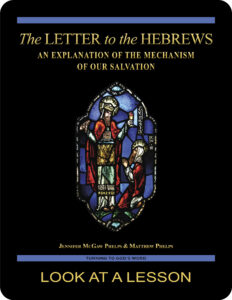reconciliation
 Paul’s Second Letter to the Corinthians 5:17–21 (NABRE) looks at the work of Christ as one of reconciliation. Due to the common Church contexts in which we hear this word and its association with the sacrament of Confession, it’s easy to begin to see this as a removing of sin and to lose site of the greater implications of what this language suggests.
Paul’s Second Letter to the Corinthians 5:17–21 (NABRE) looks at the work of Christ as one of reconciliation. Due to the common Church contexts in which we hear this word and its association with the sacrament of Confession, it’s easy to begin to see this as a removing of sin and to lose site of the greater implications of what this language suggests.
The Greek word translated in this passage as reconcile is καταλλάσσω (katallasso), which literally refers to exchanging something such as coins for another thing of equal value. The process of reconciling is a process of matching values. This concept still applies in audits and other financial checks to make sure records match. This idea of making equal seems at first opposed to the core message of Christianity.
The interesting addition to this phrase is that we are being reconciled to Christ. What Jesus Christ offers to humanity is the ability to match him in value, to be made exchangeable with him, and he calls us to help others to be so reconciled.
you also may like our study of the Letter to the Hebrews (digital only)
 Many Christians struggle to understand one of the central mysteries of our faith: how Jesus can be both human and divine at the same time. The Letter to the Hebrews: An Explanation of the Mechanism of Our Salvation, an 18-lesson Catholic Bible study with an imprimatur, offers an in-depth look at the way in which Jesus’ dual nature allows for the salvation of humanity. The Letter to the Hebrews is designed to provide information that will encourage Christians to remain faithful. Click on the book’s cover to view a sample lesson.
Many Christians struggle to understand one of the central mysteries of our faith: how Jesus can be both human and divine at the same time. The Letter to the Hebrews: An Explanation of the Mechanism of Our Salvation, an 18-lesson Catholic Bible study with an imprimatur, offers an in-depth look at the way in which Jesus’ dual nature allows for the salvation of humanity. The Letter to the Hebrews is designed to provide information that will encourage Christians to remain faithful. Click on the book’s cover to view a sample lesson.
 Click on the picture of the statue of Moses with horns (above) to learn more about Lost in Translation. A new entry is archived each Monday. Contact us to receive Lost in Translation by email every week. You may use any of the contact links on our website to ask Matthew a question.
Click on the picture of the statue of Moses with horns (above) to learn more about Lost in Translation. A new entry is archived each Monday. Contact us to receive Lost in Translation by email every week. You may use any of the contact links on our website to ask Matthew a question.
